Do you hear the word 'Bohemian' and immediately picture a free-spirited artist with a unique, colorful, and "hippie" style? You're not wrong, but the story of boho fashion goes much deeper than that. In fact, it all started over 200 years ago in the streets of 18th century Paris. Join us on a journey through the rich history of bohemianism and discover how to authentically dress in the captivating boho-chic style.
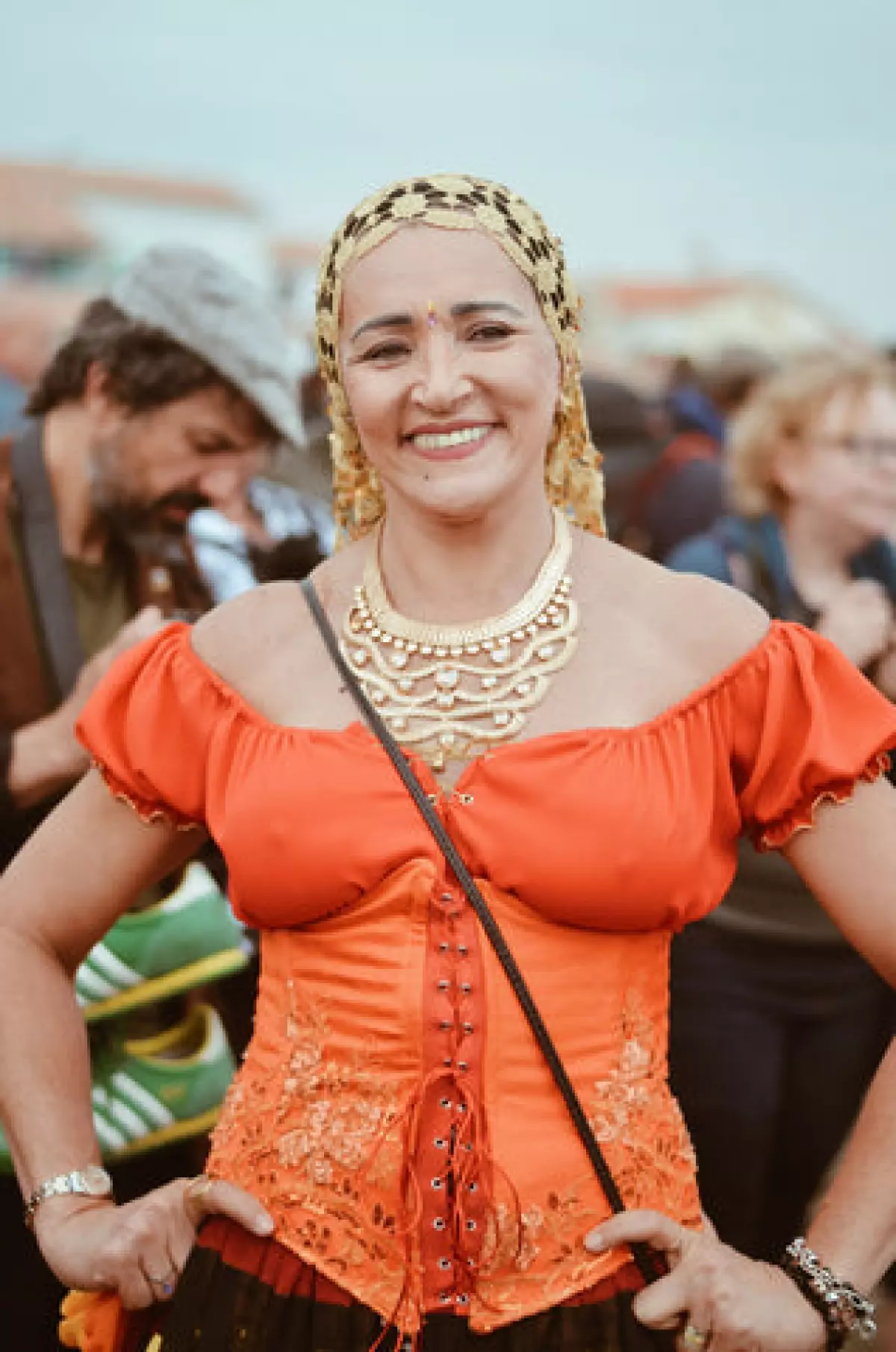 Photo by Caroline Hernandez on Unsplash
Photo by Caroline Hernandez on Unsplash
1. What Does it Mean To Be Bohemian?
At its core, being boho has always been about freedom - freedom of mind, body, and spirit. Originating as a counterculture in 18th century France, bohemianism gave artists, writers, and creatives the opportunity to express their unique creativity while rejecting societal norms and rigid fashion rules. As poverty struck after the French Revolution, these artists adopted a simpler, nomadic lifestyle that focused on creative freedom rather than material possessions. This laid the foundation for the bohemian mindset, where self-expression through fashion and art became the norm.
2. Where Does Bohemian Style Come From? A Timeline
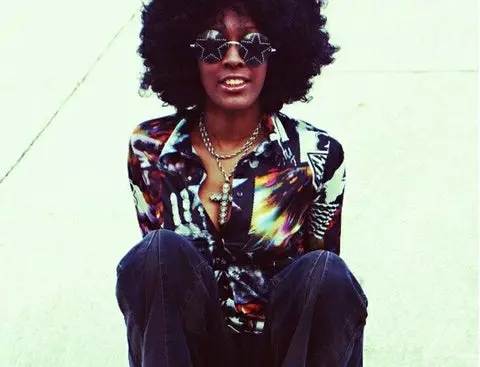 Photo by Minh Pham on Unsplash
Photo by Minh Pham on Unsplash
Boho culture has a fascinating and colorful history that spread from the streets of France to England, the USA, and eventually became a global phenomenon. Let's take a journey back to the roots of this captivating culture.
The Origin of Bohemian Culture
The term 'Bohemian' first appeared towards the end of the 18th century when French artists, previously supported by wealthy royalty and aristocrats, found themselves in poverty after the French Revolution. Struggling for income, they embraced a minimalistic and nomadic lifestyle, shifting their focus from material possessions to creative self-expression. They ingeniously repurposed old and used clothing into artistic and quirky outfits, resembling the attire of nomadic tribes.
Why were they called 'Bohemian'?
Initially, the general public compared these creatives to nomadic gypsies who dressed in a similar fashion and hailed from a region called 'Bohemia' in Eastern Europe. While the French society used the term 'Bohemian' derogatorily towards the Romani populations, it slowly evolved to describe individuals with a highly artistic and eccentric dressing sense and lifestyle.
Early 19th Century: Romantic Era and French Bohemians
The rise of the Romantic Era in Europe, breaking free from the formal shackles of classicism and embracing emotions and aesthetics in music, art, and literature, united the French Bohemians with the Romantics. They incorporated vibrant, free-flowing robes, hair accessories, and weathered fabrics into their distinctive dressing style.
Mid 19th Century: London's Pre-Raphaelite Movement
Similar to the French Romantics, Britain witnessed the rise of the Pre-Raphaelites. Rejecting restrictive clothing like corsets, they embraced unrestricted dresses, flowing hairstyles adorned with flowers, and colorful beaded necklaces. The Pre-Raphaelite movement further popularized the free-spirited bohemian aesthetic.
Late 19th Century: The Aesthetic Movement
As the 19th century neared its end, Europe's tolerance for restrictive fashion and creative expression waned. The Aesthetic Movement emerged, emphasizing free expression and incorporating natural elements like florals, animal-inspired prints, and oriental patterns into art and fashion.
1950's Beatnik Culture in the USA
In 1950's America, the Beatniks emerged as fierce supporters of free speech and non-conformity. They favored simple, low-profile clothing, often dressed in all-black, while expressing their individuality through art, poetry, and literary work. The Beatniks sowed the seeds of the Hippie Culture that dominated the 1960s.
 The free-thinking, minimalist Beatnik style. Source: Erika Zabowski on Flickr
The free-thinking, minimalist Beatnik style. Source: Erika Zabowski on Flickr
Post-1960's: Beatnik + Boho = Hippie Culture
The Hippie Culture of 1960's America combined the non-conformist Beatnik philosophy with the colorful, free-spirited Bohemian aesthetic, giving birth to the Boho fashion style we adore today. Hippies wore soft, flowing dresses, scarves, and kimonos, along with handcrafted accessories, boots, and jewelry adorned with tassels, fringes, and beads. Floral prints, animal patterns, and quirky color combinations became iconic features of the hippie boho-chic style.
 Tie-dye shirts, chunky jewelry, and round glasses were signature hippie elements. Image by tbstyleworks0 from Pixabay
Tie-dye shirts, chunky jewelry, and round glasses were signature hippie elements. Image by tbstyleworks0 from Pixabay
The Early 2000s to Present
The early 2000s witnessed a blend of various boho styles into the "boho-chic" aesthetic that has captured hearts worldwide. Taking inspiration from both hippie and bohemian fashion, boho-chic adapts the vibrant, flowing, and retro elements to suit modern sensibilities.
3. What is Boho-Chic Style?
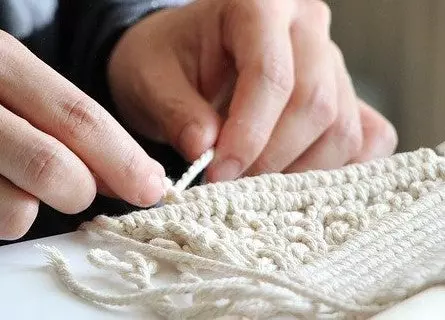 Boho-chic: A blend of boho, flowy, and contemporary elements. Image by Capucine Moda from Pixabay
Boho-chic: A blend of boho, flowy, and contemporary elements. Image by Capucine Moda from Pixabay
Boho-chic style is the latest evolution of the bohemian aesthetic, adored worldwide. In simple terms, boho-chic takes the vibrant, flowy, and retro elements of hippie and bohemian fashion and infuses them with a contemporary look. This combination retains the wonderfully messy, relaxed, and colorful boho vibe while adding slightly more urban elements.
4. What Does Boho Style Mean: Aesthetic Elements
 Embroidery, tie-dye, and crochet are signature bohemian elements.
Embroidery, tie-dye, and crochet are signature bohemian elements.
Boho style, or "boho-chic" fashion, has evolved over its 200-year history. However, quintessential boho fashion retains several aesthetic elements that define this unique sense of style:
-
Colors: Earthy, rich colors like greens, deep yellows, maroons, browns, beige, and pastels form the boho color palette. Mixing sister shades, or different shades of the same color, is favored over wearing a single color outfit. Overly saturated neon or fluorescent colors go against the natural boho look and are avoided.
-
Silhouette: Boho style embraces loose, flowing silhouettes that prioritize comfort and ease. Flowing dresses, skirts, lounge pants, and wide-sleeved tops are quintessential boho pieces.
-
Materials: Comfort is key in bohemian fashion, with soft and natural materials taking center stage. Cotton, denim, chiffon, leather, and suede are popular choices.
-
Dazzling Embellishments: Intricate details add character to boho outfits. Hand-embroidery, beadwork, tassels, pom-poms, studs, and appliqué work can be found on boho garments.
-
Patterns: Boho fashion loves eye-catching and vibrant patterns such as paisley prints, florals, tribal designs, and tie-dye.
-
Techniques: Handmade techniques emphasize individual creativity in boho fashion. Macrame (a knotting technique), patchwork, and delicate lacework give boho pieces their unique, eccentric charm.
 Handmade Macrame is an essential boho-chic technique. Image by benjamin francois from Pixabay
Handmade Macrame is an essential boho-chic technique. Image by benjamin francois from Pixabay
5. Legendary Boho Icons Over The Years
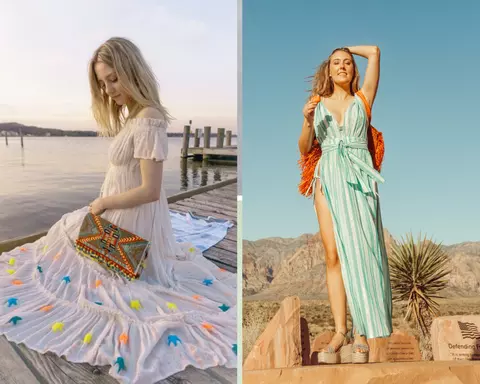 Janis Joplin embodied the colors, style, and free-spirit of the hippie culture.
Janis Joplin embodied the colors, style, and free-spirit of the hippie culture.
While countless individuals contributed to the evolution of bohemian style, a few towering figures shaped the boho aesthetic in significant ways, leaving an unforgettable trail with their signature sense of style.
-
1920's - Dorelia (Dorothy) McNeil: As a model for artists Augustus John and Gwen John, Dorothy McNeil brought the enigmatic bohemian lifestyle and its free-spirited fashion aesthetic to life by donning colorful scarves and flowing dresses while posing for their paintings.
-
1950's - Juliette Greco: The French actress and singer became a boho icon, introducing the "Beatnik" boho style with her love for oversized, baggy clothes, all-black attire, and golden footwear.
-
1960's - Talitha Getty: Actress, socialite, and granddaughter of Dorelia McNeil, Talitha Getty was a flamboyant style icon whose boho-chic sensibility continues to influence designers today. Her broad-brimmed hats, harem pants, colorful caftans, knee-length boots, and vibrant maxi dresses epitomized the fearlessly creative hippie boho aesthetic.
-
1970's - Janis Joplin: Janis Joplin, a mammoth figure in the Rock 'n Roll music scene, popularized boho-chic fashion. Her oversized round sunglasses, colorful bracelets, long beaded necklaces, and stylish headwear became iconic boho accessories.
6. How Do You Look Boho-Chic? The Essential Lookbook
 Boho beach-ready lace top by America & Beyond and floral, breezy daffodil blouse.
Boho beach-ready lace top by America & Beyond and floral, breezy daffodil blouse.
If you desire to dress in true boho-chic style, we have you covered. By choosing a few quintessentially boho pieces and accessories, you can mix and match to create a style that is not only boho but uniquely yours. Here are some tips to keep in mind when putting together your boho-chic ensemble:
Boho Tops
- Choose off-shoulder tops, V-necks, or spaghetti straps to exude a relaxed vibe.
- Opt for vibrant patterns like florals, ethnic prints, or animal prints such as leopard and tiger.
- Look for intricate embroidery or embellishment along the neck or sleeves.
- Embrace wide, flared, or ruffled sleeves.
The Bottoms
- Pick long, flowing maxi skirts, lounge pants with wide-leg cuts, and cotton shorts.
- Embrace rich patterns like florals, tie-dye, jungle prints, and leopard prints.
- Explore layered skirts with ruffles and frills for a playful element.
- Look for delicate embroidery along the waist and hem.
- Fabrics like crochet, weathered denim, cotton, and linen work well.
Boho Style Dresses
- Opt for long, flowy boho maxi dresses, knee-length A-line dresses, or wrap dresses.
- Embrace off-shoulder and deep V-necks with embroidery along the neck.
- Choose solid colors with rich embroidered details.
- Explore vibrant prints like paisley, florals, and ethnic prints.
- Embrace wide, flared sleeves in half or three-quarter lengths.
Kimonos
- Throwing an airy, loose kimono over your outfit adds a lovely layer to your boho look.
- Choose full-length or short kimonos with wide, flared, or ruffled sleeves.
- Blend patterns like paisley, florals, and abstract designs.
- Opt for sheer fabrics that are soft to the touch, or explore crochet options.
Accessories
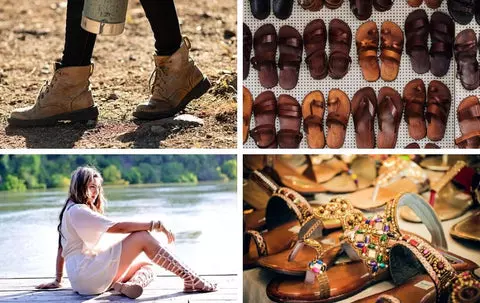
- Accessorizing plays a massive role in the bohemian look, elevating it to new heights. Earrings, bracelets, necklaces, anklets, embroidered tote bags, and bejeweled boho sandals are all fair game.
- Choose crossbody bags, drawstring bags, and tote bags in jute, macrame, leather, or cotton for a natural look.
- Look for bags with embroidery, tassels, fringes, and pom-pom detailing.
- Embrace chunky, oversized rings, pendants, and big earrings made with pearl, turquoise, wood beads, or antique silver.
- Experiment with complex designs and mix differently-sized stones.
- Opt for metals with antiquated, oxidized finishes for a rustic charm.
- Layer multiple stackable bracelets and rings for a boho statement.
- Explore beaded necklaces, bracelets, and anklets.
- Embrace broad-brimmed hats, fedoras, straw hats, and floppy hats with embroidery.
Footwear

- Don't forget to pair your boho outfit with the right footwear.
- Opt for gladiators, T-strap flat boho sandals, open-toed sandals, or heeled sandals.
- Embrace tribal and ethnic designs with colorful, intricate beadwork, mirror work, and fringes.
- For boots, choose ankle and knee-length styles in neutral tones like browns and beige.
Boho Hairstyles
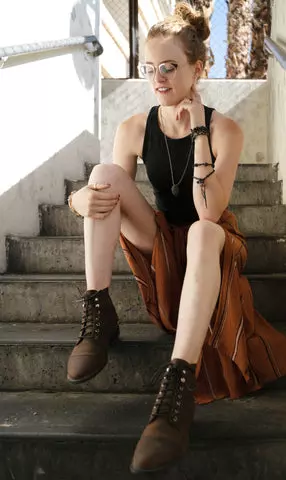
- Choose relaxed and comfortable hairstyles that don't require too many pins and ties to stay in place.
- Opt for gentle beach waves or messy buns to add a free-spirited charm to your look.
- Explore different styles of braids like fishtail, French braids, and three-way braids. Keep them loosely braided for a more boho look.
7. Do's and Don'ts Of Boho-Chic Fashion
 Image by Ben Frieden from Pixabay
Image by Ben Frieden from Pixabay
While bohemian fashion encourages individuality, here are some styling tips to help you master that wonderfully carefree boho-chic look:
-
Choose Comfort: Comfort should always be prioritized in boho fashion. Look for flowy, soft clothes with gentle silhouettes. To add an urban touch, try pairing loose pieces with slightly more fitted ones, such as wide-legged lounge pants with a fitted strappy top and a wide-sleeved shrug.
-
Natural Fabrics: Embrace natural materials like cotton, denim, leather, suede, linen, rayon, and silk that align with the earth-friendly philosophy of boho fashion.
-
Avoid Neons and Over-Saturated Colors: Neon and overly saturated colors like fluorescent green, royal blue, and neon pink should be avoided. Instead, go for earthy colors, neutrals, or pastels, and experiment with different shades of the same color. For example, pair a lavender top with a mauve kimono and beige linen lounge pants.
-
Mix Small Prints With Bigger Patterns: Mixing different prints adds texture to your look. However, to avoid overwhelming yourself with patterns, mix smaller prints like dots and small floral patterns with bigger prints like paisley or jungle patterns.
-
Details Are Everything: Beautiful, intricate details on your clothes allow your individuality to shine. Choose clothes with hand-embroidered motifs, studs, tassels, fringes, beaded patterns, lace, and mirror work.
-
Choose Artisanal Items: When shopping, keep an eye out for artisanal clothes and accessories with unique designs. Artisan-crafted jewelry, footwear, and clothing pieces have a beautiful human touch that machine-made, assembly-line clothes can't match in terms of individuality.
-
Accessorize, Accessorize, Accessorize: Clothes make up just a small part of the boho look. It's the accessories that truly make a difference. So, feel free to accessorize with earrings, bracelets, necklaces, anklets, embroidered tote bags, and bejeweled boho sandals. Don't be afraid to go big!
-
Layer Your Look: Layering different clothes and accessories adds depth and uniqueness to your boho-chic style. Throw on a colorful kimono over your top and lounge pants or stack multiple bracelets and rings to enhance your look.
-
Avoid Minimalism, Go Big: Bohemians are free spirits who embrace their unique selves. Embrace chunky pendants, oversized rings, large hoops, and stone earrings.
-
Don't Be Afraid to Get Messy: The neater and more minimal a piece is, the less it aligns with the boho aesthetic. Embrace clothes and accessories in vibrant colors, patterns, and unique details. After all, the early bohemians pioneered this quirky, eccentric style by fearlessly combining many different aesthetic elements.
Final Thoughts
 Photo by Nicole Geri on Unsplash
Photo by Nicole Geri on Unsplash
The counterculture that began in the 1800s by impoverished, non-conformist, and passionate artists is now celebrated worldwide for its unique and mesmerizing style. But boho fashion goes beyond its aesthetic appeal; it's about freely expressing artistic individuality and embracing unique identities.
Boho style, with its vibrant prints, flowing silhouettes, and artful details, represents a meeting point of cultures from across the world. It beautifully reflects how our beliefs and ideas can impact our creativity, self-expression, and fashion choices. The boho philosophy is here to stay, continuously evolving in refreshing ways that seamlessly blend with the changing times.









